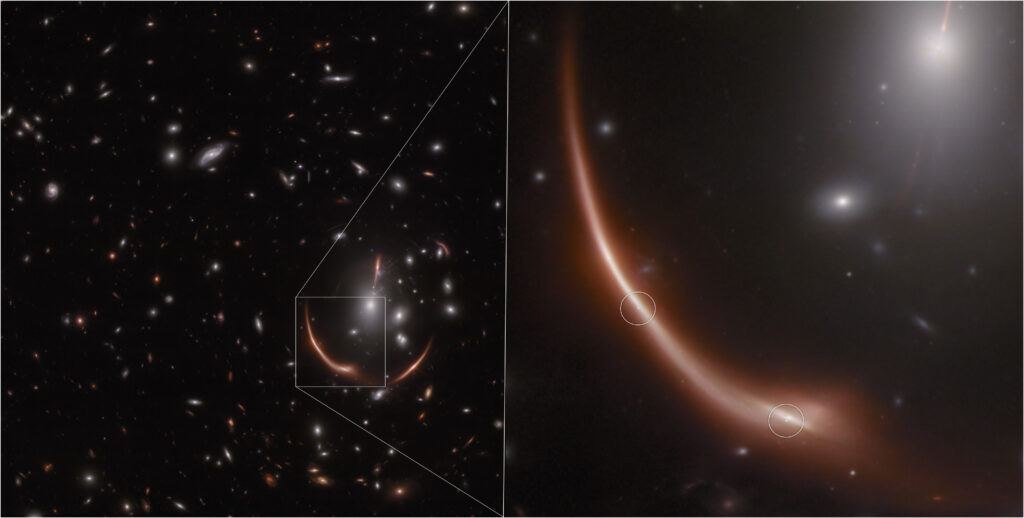The James Webb Space Telescope (JWST) managed to photograph a “copy” of a supernova that broke out in a distant galaxy. This was achieved thanks to the effect predicted by Albert Einstein.

We are talking about an effect called a gravitational lens. It arises due to the fact that the gravity of celestial bodies bends space-time like a lens, bending and amplifying light from more distant objects. This is most evident in the case of galactic clusters. Their powerful gravity can significantly increase the brightness of the background celestial bodies. Astronomers are eager to take advantage of this opportunity because, thanks to gravitational lenses, they can see objects at the edge of the Universe that are too dim to be seen even by the most powerful telescope.
One of these gravitational lenses was created by the cluster MACS J0138.0-2155. Its powerful gravity “duplicated” the image of the more distant galaxy MRG-M0138 several times. It is located on the edge of the observable universe, and the light it emitted took 10 billion years to reach Earth.
In 2019, astronomers discovered that a supernova outbreak had occurred in MRG-M0138. It has been observed several times in each of the “duplicates” of the galaxy. And after studying the new images taken by JWST, the researchers were surprised to find that seven years later, a second supernova occurred in the same galaxy.
The published JWST photo shows two images of the same supernova in MRG-M0138. They are circled. Another supernova image is expected to become visible around 2035.
According to https://esawebb.org
Follow us on Twitter to get the most interesting space news in time
https://twitter.com/ust_magazine


